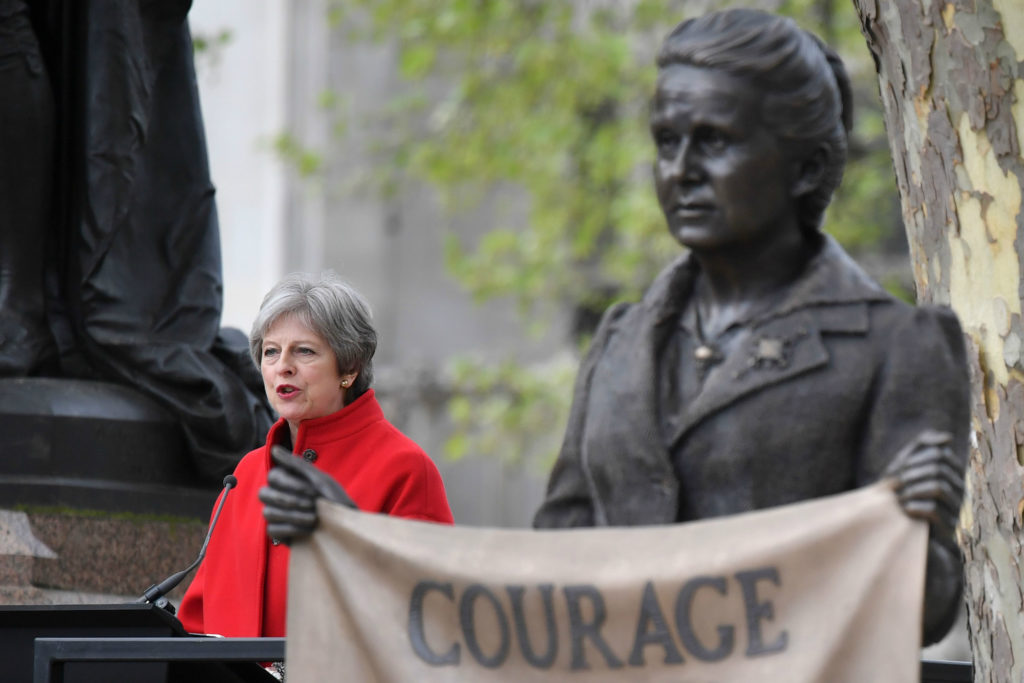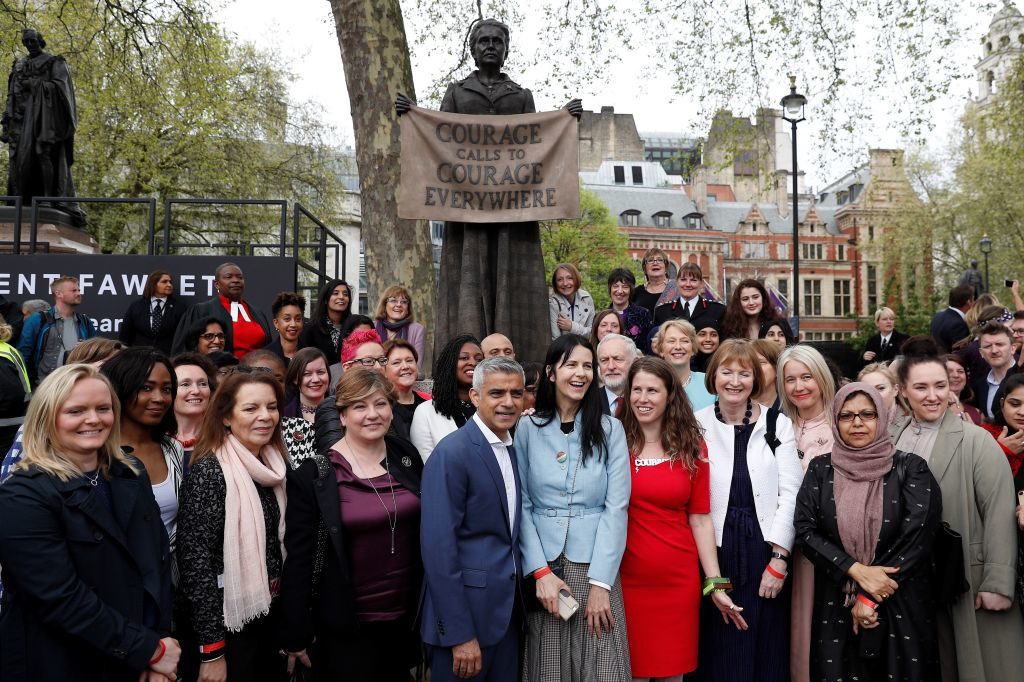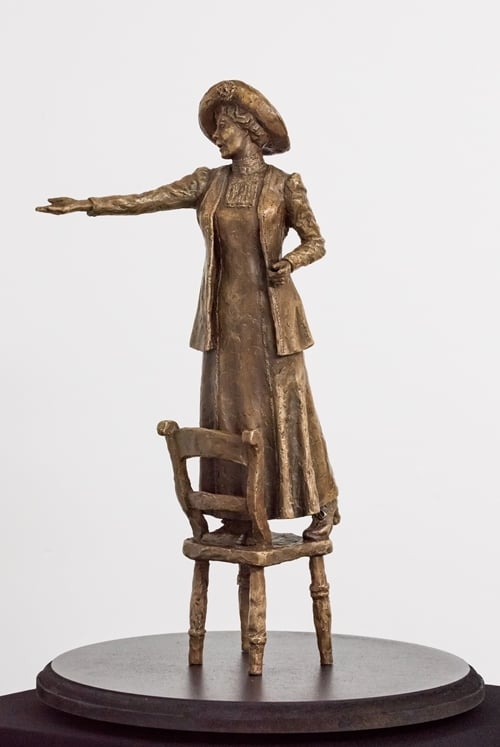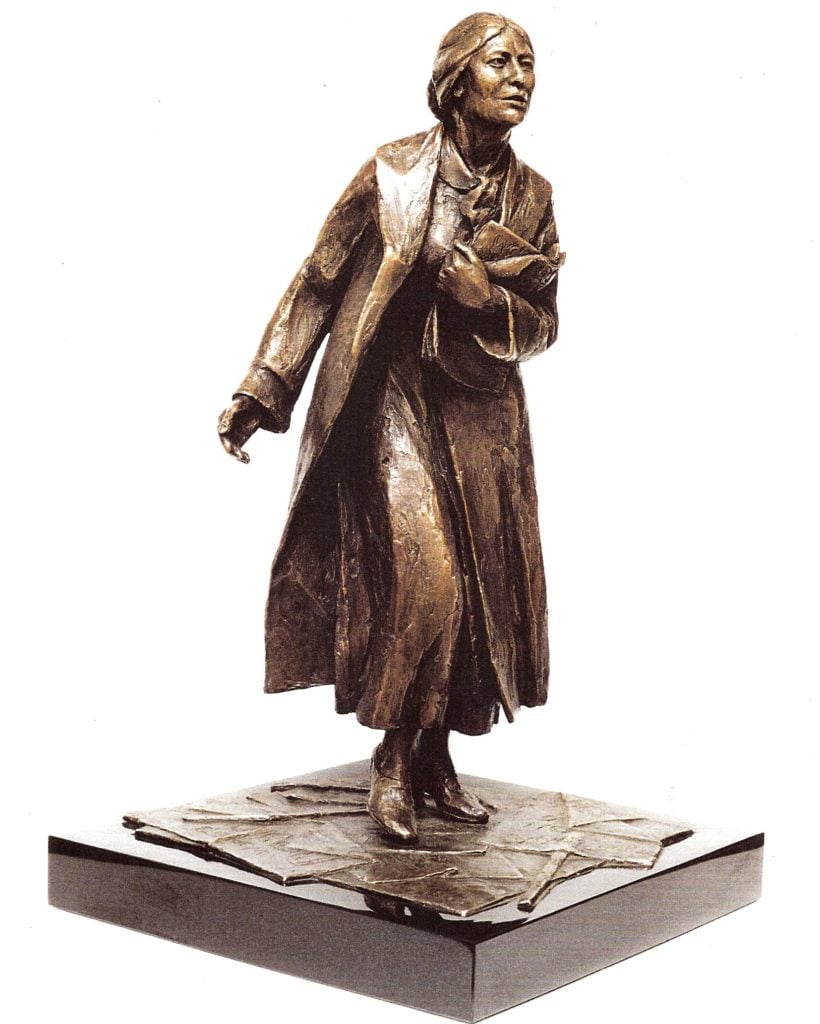Art World
The First Statue of a Woman in London’s Parliament Square Joins Churchill, Mandela, and Abraham Lincoln
The Turner Prize-winning artist Gillian Wearing has created a memorial to Millicent Fawcett, the campaigner for women’s suffrage.

The Turner Prize-winning artist Gillian Wearing has created a memorial to Millicent Fawcett, the campaigner for women’s suffrage.

Javier Pes

The first sculpture of a woman by a female artist in London’s Parliament Square was unveiled to the public on Tuesday. The Turner Prize-winning artist Gillian Wearing’s memorial to the suffragist Millicent Fawcett joins 11 statesmen—including Winston Churchill, Lloyd George, Gandhi, and Nelson Mandela—in the symbolic public space opposite the Houses of Parliament. Abraham Lincoln stands nearby on the opposite side of the street.
Fawcett is shown holding a banner with the words: “Courage calls to courage everywhere.” The activist used the phrase to describe the death of suffragette Emily Davison, who was killed when she ran onto the racetrack in the Epsom Derby in 1913 to raise awareness for the cause.
The statue has been commissioned to mark the centenary of women first getting the right to vote in the UK. (Although even this law did not apply to everyone: In 1918, women still had to be over age 30 and members of the property-owning middle class to qualify.) Photographs of other campaigners for female suffrage, including a few men, are displayed as a frieze on the memorial’s plinth.

British artist Gillian Wearing (center) with Mayor Sadiq Khan (center-left) at the unveiling of her sculpture of the women’s rights campaigner Millicent Fawcett in Parliament Square. Photo by Adrian Dennis/AFP/Getty Images.
The statue has been commissioned by the mayor of London and the initiative 14-18 Now, which is marking the 100th anniversary of World War I through contemporary art and performances. The sculpture is supported by the UK government’s national centenary fund. Prime Minister Theresa May spoke at the unveiling.
As a suffragist, Fawcett believed in law-abiding campaigning for women’s rights, unlike the suffragettes who took direct action in the years before World War I. Leading suffragettes Emmeline Pankhurst and her daughters Christabel and Sylvia, as well as many of their supporters, went on a hunger strike when they were jailed for acts such as smashing windows and arson.

Hazel Reeves’s model of Emmeline Pankhurst memorial, Rise Up Women, copyright the artist, photograph by Nigel Kingston.
But suffragettes are getting a new public statue of their own as well. A monument to Emmeline Pankhurst by the artist Hazel Reeves is due to be unveiled in her home city of Manchester in the north of England in December. “It is great that there will be more statues of women this year,” Reeves says. “We are short of them in general.”

Ian Walters, Sylvia Pankhurst, courtesy of the Sylvia Pankhurst Memorial Committee.
Another statue of Emmeline Pankhurst has stood near Parliament in Victoria Gardens since 1930, with a plaque added to acknowledge Christabel in the late 1950s. But erecting a statue in London of Emmeline’s Socialist firebrand daughter, the artist Sylvia Pankhurst, has been more of a saga. It is finally due to be unveiled in Islington, north London, later this year. After a bid for government funding was rejected, advocates are now relying on crowdfunding to finance the project.
The sculpture’s designer, the late artist Ian Walters, had originally hoped that the work would stand on College Green, opposite the House of Lords and across the road from her mother and sister’s memorial. Walters also created the statue of Nelson Mandela that stands in Parliament Square—right next to Wearing’s new arrival honoring Fawcett.
There have been calls for the first woman to take up her seat as a Member of Parliament to be better honored. US-born Nancy Astor entered the House of Commons in 1919 as a Conservative MP, championed the rights of women and children. She kept her seat until 1945.
Controversially, in January Westminster Council turned down a proposal to install a statue of Margaret Thatcher, the first woman to become a UK Prime Minister, in Parliament Square. The work by Douglas Jennings would have stood near Abraham Lincoln’s memorial. Costs would have been met by private donors. Councillors blamed “monument saturation,” in and around the square and feared the sculpture might be targeted by protesters even when placed on a plinth measuring more than four metres tall. Jennings tells artnet News that the committee behind Thatcher’s statue “still have hope” that it will be erected somewhere in London, possibly not in the square.